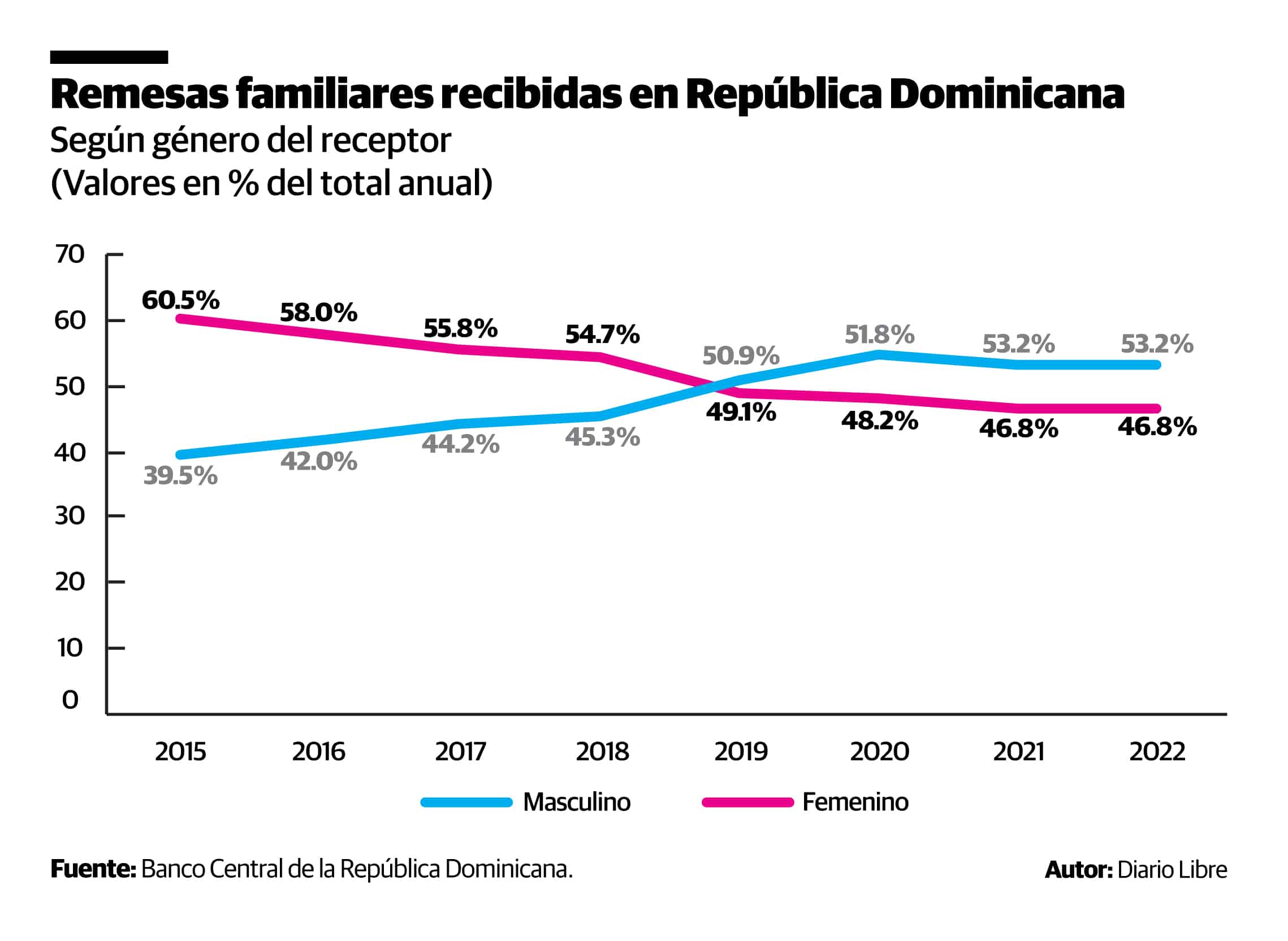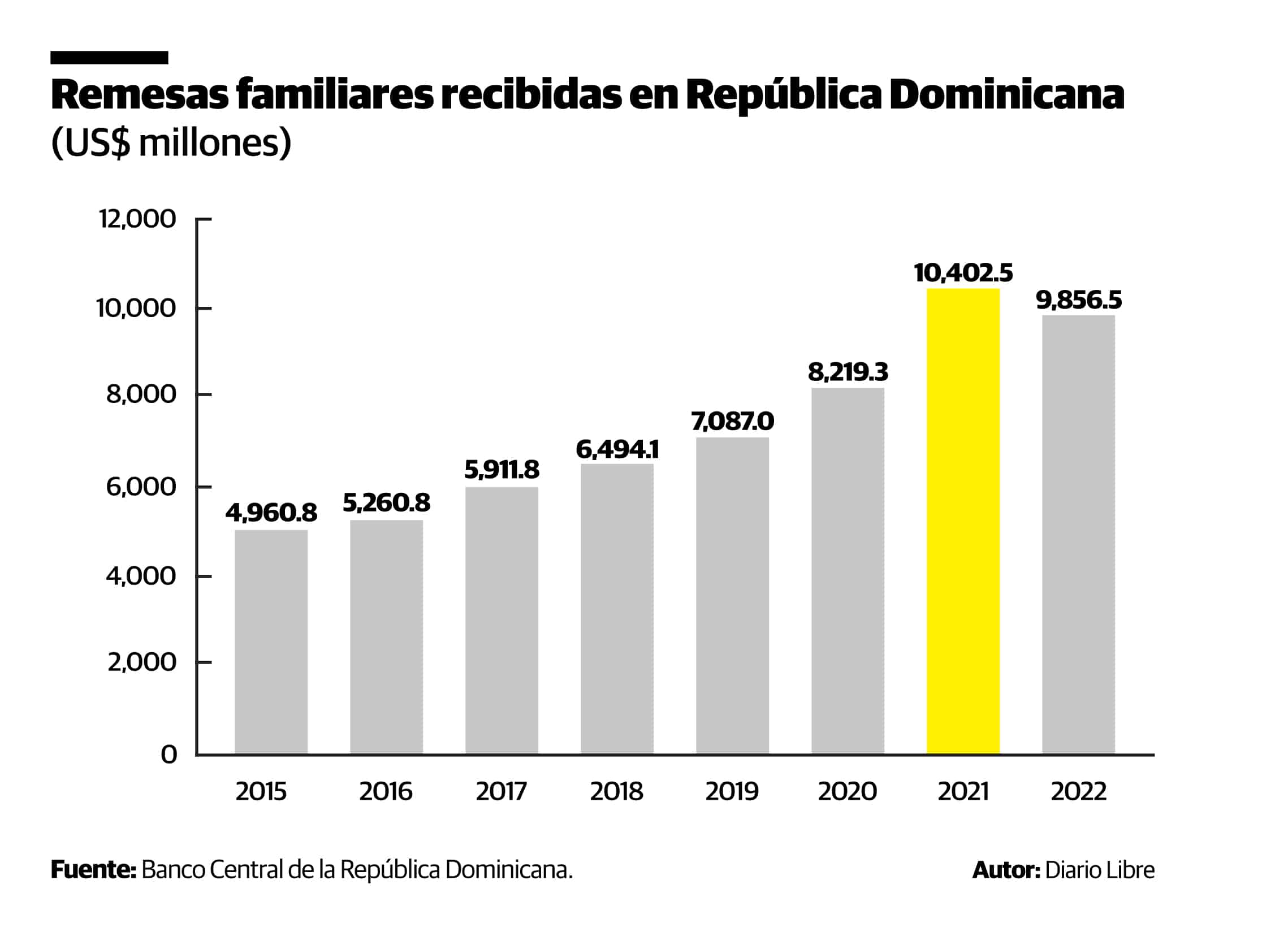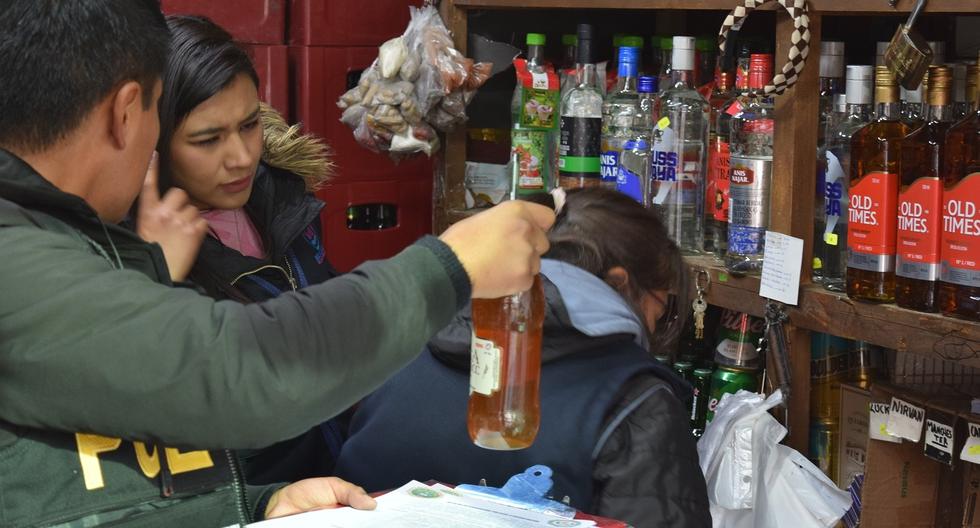The men in the Dominican Republic receive more remittances than women, but this has not always been the case. Before the pandemic, they were the biggest recipients. Although the reasons are not precise, for example if international remote work affects, analysis suggests that the migratory pattern may give a clue.
In 2015, the 60.5% of the remittances received in the Dominican Republic were recruited by women and the 39.5% men. With the passing of the years, women were dwindling in percentage and men increasing, until in 2019 they exceeded them and it has continued like this to date.
“Recently more women have assumed the role of head of the family,” says the Dominican Central Bank to free newspaper, through its technicians from the International Department. “Additionally, the jobs for migrants abroad are for people dedicated to the personal care and others traditionally played by women”.
“The combination of these factors,” he adds, “suggests that more dominican women are the head of the family who emigrates and from the outside sends the remittances to his home, thus explaining the change in trend”.

The Central Bank of the Dominican Republic, which is the institution that officially monitors the receipt of remittancesdoes not indicate in its statistical counts if there is remote workers who receive their salary from a foreign employer via remittances.
In 2021, Free Daily published a report on the rise registered in the telework pandemic in the Dominican IT sector with international employers. During the reporting, interviewees told that there were those who received their payment by remittances.
Just last year, the Central Bank reports that they received 9,856.5 million dollars in remittances relatives, being 5.2% less than those of 2021.

54.2% of the diaspora is female
Officially it is estimated at more than 2.5 million people of Quisqueyan origin residents abroadconcentrating mostly on America and Western Europe, mainly in the United States and Spain. Of that universe, the women represent 54.2% and men 45.8%, reports the Institute of Dominicans Abroad (Index).
“Now I feel that he is much better, because there is more equalityand I think both men and women can do almost the same thing,” says Merelyn Lantigua, a Dominican who immigrated to Spain from Santo Domingo six years ago.
The young woman works in Santander caring for the elderly. Of her income she sends at least 10,000 pesos per month for her mother, stepfather and husband, who stayed in Quisqueya.
Although her partner has a job, she is satisfied to send a monthly contribution to the family. “To be able to help and feel that do not pass any need”, he comments.
In a report on the sociodemographic record of the diaspora, published by the Index in 2021, it was estimated that 2,094,222 people of Dominican origin resided in USAof these 1,108,315 are women (53.4%) and 975,907 men (46.6%).
The percentages are larger if you take the community in Spain. Of 186,395 people, 60.0% is female and 40.0% male.
According to a report from the Ministry of Foreign Affairs
-
Shipping costs of US$200 stood at 3.6% in 2021.
-
70% of transactions are paid in dollars.
-
77% of transactions originate from sending cash.
-
Digital transfers are growing and their deposit can further facilitate cost reduction and access to the financial system.
How much do they send?
The sender of remittances Dominican send more than 15 times a year and with averages of more than 300 dollarshighlights the study “The state of the intermediation of money transfers remittances and perspectives towards its modernization for financial inclusion in the Dominican Republic”, published in 2021 by the Ministry of Foreign Affairs.
It highlights that, in 2005the Dominicans sent 200 dollarswhile 15 years laterwere 300 dollarswith most spending an average of nine years sending money.
The study advises that the State promote the personal finance management training between senders and receivers of remittancesso that they learn to save, invest or better manage said aid and increase their transactions of remittances using digital or internet methods.


















